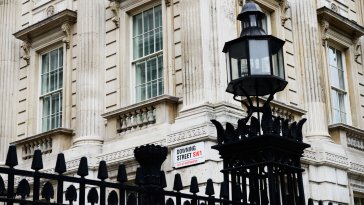
Ca reaction: BoC accelerates the pace of cuts, but we see a reversion to 25bp at November’s meeting
KEY POINTS
The Bank of Canada accelerated the pace of easing at today’s meeting, cutting its main policy rate by 50bps, to 3.75%, from 4.25% previously. It also maintained that it would continue to normalize its balance sheets. While the jumbo-cut was in line with analysts and markets’ expectations, we had expected the Bank to maintain the previous 25bp-per-meeting pace until after the US election. In the event, however, policymakers focused on the recent drop in the headline CPI inflation rate to 1.6% in September. Indeed, Governor Tiff Macklem explained in his opening remarks that the recent data “suggests we are back to low inflation” and that the Bank’s focus is to maintain it, adding that it needs to “stick the landing”. The Bank also now sees upward and downward risks to its inflation projection as “reasonably balanced”.
The BoC also published its updated projections at today’s meeting which were broadly consistent with a soft-landing. Its GDP outlook was pretty much unchanged, with growth of 1.2% and 2.1% still expected in 2024 and 2025, respectively. The 2026 forecast was revised down to 2.3%, but only by 0.1ppt. Policymakers described the economy as remaining in excess supply in the near term, with a softening labour market leading to a pick-up in unemployment concentrated among newcomers and the youth. Further ahead, though, growth is expected to pick up gradually, driven by an uptick in consumer spending and business investment on the back of falling interest rates. Export demand is also expected to rise.
Macklem noted that stronger growth was needed to absorb excess supply, with comments in the accompanying report suggesting this should start to happen in the second half of 2025. Note, the Bank expects potential growth to moderate from 2.4% in 2024 to 1.9% on average over 2025 and 2026, as labour productivity picks up, partially offsetting slower population gains.
At the same time, the BoC reduced its CPI inflation forecast for 2024 to 2.5% – broadly in line with our forecast – from 2.6%, and its 2025 forecast to 2.2%, from 2.4%, and kept its 2026 forecast unchanged at 2%, with Macklem highlighting it had “been a long fight against inflation, but it had worked” at the press conference. In addition, the accompanying report stated that the latest inflation readings not only reflected lower energy prices but easing underlying inflationary pressures too. Indeed, its preferred measures of core inflation, CPI-median and CPI-trim, dropped to 2.3% and 2.4%, respectively, and shelter price inflation started to show signs of easing. The Bank also noted that inflation expectations for both businesses and households continued to normalize. Nonetheless, the BoC cautioned that services inflation could persist highlighting a key upside risk to its projections. Indeed, lower borrowing costs, coupled with pent up demand for housing could spur stronger-than-expected shelter price inflation. And higher-than-expected labour costs – both higher wage growth and weaker labour productivity growth – could lead to stubborn inflation in non-shelter services.
Looking ahead, we think the Bank of Canada will return to a 25bp cut at its next meeting. Indeed, the recent upside surprises in US data have led investors to trim their expectations for future rate cuts from the Fed, which combined with today’s bumper cut from the BoC, has led the Canadian dollar to drop back to post-pandemic lows. We doubt the BoC will feel comfortable diverging completely from the Fed. In addition, the Governor was quick to caution that the timing and pace of future cuts will be based on the incoming data at the press conference. On this front, we think concerns about the labour market are slightly overblown; employment rose by 47K in September undoing the weakness in July and the unemployment rate fell for the first time since January. We don’t expect to see the labour market loosen much further, keeping annual earnings growth relatively elevated. Increasingly, though, we think the US election is key for the BoC, with a Donald Trump win and associated tariff increases likely reducing the space for easing. In this scenario – which is now our base case – we think the Bank would be forced to halt their easing cycle in the Spring, with the policy rate at 3%, higher than markets currently expect.
Financial markets reacted modestly to today’s meeting. The chances of a further 50bp rate cut in November were broadly unchanged with markets 50/50 on the matter. 2-year bond yields fell by 0.7bps (to 3.02%), while 10-year yields rose by 1.5bps (to 3.25%). The Canadian dollar fell to C$1.3853 against the dollar, close to the lower end of the range seen over the last two years.
Disclaimer
This document is for informational purposes only and does not constitute investment research or financial analysis relating to transactions in financial instruments as per MIF Directive (2014/65/EU), nor does it constitute on the part of AXA Investment Managers or its affiliated companies an offer to buy or sell any investments, products or services, and should not be considered as solicitation or investment, legal or tax advice, a recommendation for an investment strategy or a personalized recommendation to buy or sell securities.
It has been established on the basis of data, projections, forecasts, anticipations and hypothesis which are subjective. Its analysis and conclusions are the expression of an opinion, based on available data at a specific date.
All information in this document is established on data made public by official providers of economic and market statistics. AXA Investment Managers disclaims any and all liability relating to a decision based on or for reliance on this document. All exhibits included in this document, unless stated otherwise, are as of the publication date of this document.
Furthermore, due to the subjective nature of these opinions and analysis, these data, projections, forecasts, anticipations, hypothesis, etc. are not necessary used or followed by AXA IM’s portfolio management teams or its affiliates, who may act based on their own opinions. Any reproduction of this information, in whole or in part is, unless otherwise authorised by AXA IM, prohibited.
Issued in the UK by AXA Investment Managers UK Limited, which is authorised and regulated by the Financial Conduct Authority in the UK. Registered in England and Wales No: 01431068. Registered Office: 22 Bishopsgate London EC2N 4BQ
In other jurisdictions, this document is issued by AXA Investment Managers SA’s affiliates in those countries.
© AXA Investment Managers 2024. All rights reserved



